|
All key features of G2 series of CCD cameras are preserved
also in G2-8300 model:
Lowest possible system read noise, limited by CCD chip
itself. High dynamic range, 16-bits digitization. Efficient and precisely regulated cooling up to 50 °C below ambient temperature. Ability of unattended operation enabled by integrated
mechanical shutter and filter wheel supporting LRGB, BVRI or
narrow-band filters. Compact camera head, small and lightweight enough to be
attached even to small telescopes. Single-voltage power supply enabling operation from
12V battery or “brick” adapter. Plug and play installation and rich software
support. Robust construction to sustain every-day usage.
But there are some features unique for G2-8300
model:
Although the KAF8300 CCD detector has Full-Frame
architecture, it is equipped with so-called anti-blooming gate
(ABG), which protects electron leaks from saturated pixels to
neighboring pixels when a bright star appears in the field of view.
This makes G2-8300 camera suitable also for astro-imaging
applications. The CCD imaging area is somewhat larger that the clear
aperture of standard filters in 1.25 inch filter
cells. Such filter cells cause vignetting in the image corners. This
is why the filter wheel with 6 positions is not offered with G2-8300
and filters for 5 positions filter wheel are not standard
1.25, but larger filters with 31 mm
diameter. 31 mm filters do not cause vignetting on vast
majority of optical systems, but they are significantly cheaper and
more compact compared to 2 inch filters or filters in M48 threaded
cells.

G2-8300 camera head G2-8300 camera is manufactured with monochrome CCD detector as well
as with color detector, which allows capturing of color images with
single exposure:
| Model |
CCD detector |
ABG |
Color mask |
Resolution |
Pixel size |
Imaging area |
Download time |
| G2-8300 |
KAF8300 |
yes |
no |
3358 × 2536 |
5.4 × 5.4 μm |
18.1 × 13.7 mm |
12.2 s |
| G2-8300C |
KAF8300 |
yes |
RGBG (Bayer) |
3358 × 2536 |
5.4 × 5.4 μm |
18.1 × 13.7 mm |
12.2 s |
Although KAF8300 CCD detector is not square like in the case of
G2-4000 camera (square detectors always optimally utilize optics
capabilities and filter area, so they best suit to astronomy
applications), KAF8300 aspect ratio is 4:3, which is closer to square
than 3:2 aspect ratio of other detectors like KAF3200, KAI11000
etc.

G2-8300 camera with Canon EOS photographic lens G2CCD Cameras Technical Specifications
CCD Chip
G2-8300 camera uses high sensitive and low noise Kodak
KAF8300 Full Frame CCD detectors with 4/3 format. Advanced
manufacturing techniques like transparent electrodes and
microlensing ensure up to 55 %
peak quantum efficiency. The inherent dark current of these
detectors is very low, so the resulting image S/N ratio is
very good.
| Resolution |
3358 (H) × 2536 (V)
pixels |
| Pixel size |
5.4 μm
(H) × 5.4 μm (V) |
| Imaging area |
18.1 mm (H) × 13.7 mm (V) |
| Full well capacity |
~25,000
e-- |
| Dark current |
0.2 e-/s/pixel at
0 °C |
| Dark signal doubling temperature |
5.8 °C |
KAF-0402ME CCD chip specifications KAF8300 CCD chip and its Quantum
Efficiency Camera Electronics
16-bit A/D converter with correlated double sampling
ensures high dynamic range and CCD chip-limited readout noise.
Fast USB interface ensures image download time within
seconds.
Maximum length of single USB cable is 5 m. This length can be extended for instance
to 10 m by using single USB hub
or USB active extender cable. Up to 100 m extension can be achieved with
third-party extender.
| ADC resolution |
16 bits |
| Sampling method |
Correlated double sampling |
| Read modes |
Standard (STD) |
| |
Low-noise (LN) |
| Horizontal binning |
1 to 4 pixels |
| Vertical binning |
1 to 4 pixels |
| Sub-frame readout |
Arbitrary sub-frame |
| TDI readout |
Yes, 2 ms
resolution |
| Computer interface |
USB 2.0 High Speed |
| |
USB 1.1 Full Speed compatible |
Camera electronics specifications Image download time depends on the CCD chip used in
particular camera model. Also the read noise depends on the
chip as well as on the read mode.
Standard read mode provides system read noise approx.
1 e- above low-noise read
mode. LN (Low-noise) read mode is somewhat slower (approx.
1.2×), but
ensures system read noise equal or smaller than the
manufacturer-specified chip read noise.
| Gain |
0.4 e-/ADU (1 × 1 binning) |
| |
0.8 e-/ADU (other
binnings) |
| System read noise |
8 e- RMS (LN read) |
| |
9 e- RMS (standard
read) |
| Full frame download |
14.4 s (LN read) |
| |
12.2 s (standard read) |
G2-8300 electronics specifications Notes:
Binning can be combined independently on both
axes ULN read noise depends on the CCD chip itself. If the
read noise of the particular chip is 7
e- RMS, the system read noise is also
7 e- RMS. Download times are valid for USB 2.0 host and may vary depending on host
PC. Times stated here were measured on
1.5 GHz
Pentium M based laptop computer. Download times can be
somewhat longer when connected to USB 1.1 host.

Power and USB connectors on the bottom of the
camera head Chip Cooling
Regulated two-stage thermo-electric chip cooling up to
50 °C below ambient temperature
with forced air cooling and 0.1 °C temperature precision ensure very low
dark current for long exposures.
| CCD chip cooling |
Thermoelectric (Peltier modules) |
| TEC modules |
Two stages |
| Max. delta T |
50 °C below ambient
maximum |
| |
45 °C below ambient
typical |
| Regulation precision |
0.1 °C |
| Hot side cooling |
Air cooling (50 mm
fan) |
Chip cooling specifications 
Fans and air output vents on the back side of the
camera Notes:
It is not recommended to cool the chip to the maximum
temperature difference, else the camera cannot guarantee
temperature stability when the ambient air temperature
rises. It is usually practical to set the temperature so the
cooling utilization varies around 90%. This provides enough
reserve in cooling power to keep the CCD temperature even if
the ambient temperature rises several degrees
Celsius. Water-assisted cooling is available for all G2CCD
cameras. Contact the manufacturer for details. The cooling performance depends on the environmental
conditions and also on the power supply. If the power supply
voltage drops below 12 V, the
maximum temperature difference is lower.

Maximum temperature drop -50°C provides little room
for regulation Power supply
The 12 V DC power supply adapter enables camera
operation from arbitrary power source including batteries,
wall adapters etc. Universal 100–240 V AC/50–60 Hz,
60 W “brick” adapter is
supplied with the camera. Although the camera power
consumption does not exceed 30 W,
the 60 W power supply ensures
noise-free operation.
| Camera head supply |
12 V DC |
| Camera power consumption |
15 W without
cooling |
| |
40 W with 100%
cooling |
| Adapter input voltage |
100-240 V AC/50-60 Hz |
| Adapter output voltage |
12 V DC/5 A |
| Adapter maximum power |
60 W |
Power supply specifications Notes:
Camera power consumption is measured on the AC outlet
of the 12 V power
supply. The camera contains its own power supplies inside, so
it can be powered by unregulated 12 V DC power source—the input voltage can be anywhere between 10
and 14 V. However, some
parameters (like cooling efficiency) can degrade if the
supply drops below 11 V. G2 CCD camera measures its input voltage and provides
it to the control software. Input voltage is displayed in
the Cooling tab of the CCD Camera
control tool in the SIPS. This feature is important
especially if you power the camera from batteries.

12 V DC/5 A power
supply adapter for G2CCD Camera Warning: The power connector on the camera head uses
center-plus pin. Although all modern power supplies use this
configuration, always make sure the polarity is correct if you
use own power source. Mechanical Specifications
Compact and robust camera head measures only 114 × 114 × 77 mm
(approx. 4.5 × 4.5 × 3 inches).
The head is CNC-machined from high-quality aluminum and black
anodized. The head itself contains USB-B (device) connector
and 12 V DC power plug, no other parts (CPU box, USB
interface, etc.), except a “brick” power supply, are
necessary. Integrated mechanical shutter allows streak-free
image readout, as well as automatic dark frame exposures,
which are necessary for unattended, robotic setups. Integrated
filter wheel contains 5 positions for D31 mm filters. It is also possible to screw
the standard 1.25" filters in threaded cells
into the filter wheel, but such filters can cause vignetting,
especially when used with fast optics.

5-positions filter wheel and blade shutter inside
the G2-8300 camera head
| Internal mechanical shutter |
Yes, blade shutter |
| Shortest exposure time |
100 ms |
| Longest exposure time |
Limited by chip saturation only |
| Internal filter wheel |
5 positions for D31 mm
filters |
| Head dimensions |
114 mm × 114 mm × 77 mm |
| Back focal distance |
29 mm |
| Camera head weight |
1.1 kg |
Mechanical specifications Slightly slimmer variant of the camera head without
internal filter wheel is available. The head dimensions are
114 × 114 × 65 mm
(approx. 4.5 × 4.5 × 2.5 inches).
This variant allows attaching of external filter wheel with 10
or 12 positions for D36 mm or
D31 mm filters.
G2 CCD camera with external filter wheel
attached External filter wheels for 10 filters D36 mm (left) and for 12 filters
D31 mm or with M28.5 × 0.6 threaded cells
(right)
| Head dimensions |
114 mm × 114 mm × 65 mm |
| Back focal distance |
29 mm |
| Back focal distance |
16.5 mm |
| Back focal distance from external filter wheel |
33.5 mm |
| Weight of camera head |
0.9 kg |
| Weight of camera head + external filter wheel |
1.7 kg |
Mechanical specifications Notes:
Shortest exposure time 100 ms is available on G2
cameras revision 3 and higher. Shortest exposure time of
older revisions was 175 ms.
Software Support
Powerful SIPS (Scientific Image Processing System) software
supplied with the camera allows complete camera control
(exposures, cooling, filters) with automatic sequences and
complete image calibration. SIPS also supports advanced tools like
Image Add tool with automatic sub-pixel image alignment, (L)RGB
Add tool, Image Blink tool, image filters and many more
functions.
Simple Image Manipulation System Drivers for third-party software are also available (e.g. MaxIm
DL, AstroArt, etc.). Visit the “download” portion of the
manufacturer web site for current list of available drivers,
please.
Automatic guiding
SIPS software package allows automatic guiding of the
astronomical telescope mounts using separate guiding camera.
Proper and reliable automatic guiding utilizing the
computational power of Personal Computer (e.g. calculation of
star centroid allows guiding with sub-pixel precision) is not
simple task. Guiding complexity corresponds to number of
parameters, which must be entered (or automatically measured).
And the number of necessary parameters lead to splitting of
the “Guiding” tab in the SIPS into two separate tabs.
The first one is called “Guiding setup” and it
summarizes all parameters necessary for proper autoguiding
setup.

Guider setup tab of the SIPS CCD Camera control
tool The second tab called “Guiding” thereafter allows
switching of autoguiding on and off, starting of the automatic
calibration procedure and recalculation of autoguiding
parameters when the telescope changes declination without the
necessity of new calibration. Also swapping of the German
Equatorial mount no longer requires new autoguider
calibration.
This tab also graphically displays time history of guide
star offsets from reference position in both axes. The length
of graph history as well as the graph range can be freely
defined, so the graph can be adjusted according to particular
mount errors and periodic error period length.

SIPS automatic guiding Complete log of calibration procedure, detected offsets,
correction pulses etc. is also shown in this tab. The log can
by anytime saved to log file.
G2 cooled imaging camera with G0 high-performance
guider Shipping and Packaging
G2 CCD cameras are supplied in the foam-filled, hard
carrying case containing:
Camera body with a user-chosen telescope adapter. The
standard 2" barrel adapter is included by default. If ordered,
the filter wheel is already mounted inside the camera head and
filters are threaded into place (if ordered). A 100-240 V AC input, 12 V DC output
“brick” adapter with 1.8 m
long power cable. 5 m long USB A-B cable for
connecting camera to host PC. A CD-ROM or USB Flash Drive with camera drivers, SIPS
software package with electronic documentation and PDF version
of User's Manual. A printed copy of User's Manual.
G2 CCD cameras are shipped in the foam-filled carrying
case (left), larger case is used if camera is ordered with
external filter wheel (right) Image Gallery
Example images captured with G2-8300 camera.
 |
| Object |
M42 “Great Orion Nebula” |
| Author |
Reinhold Wittich |
| Camera |
G2-8300 |
| Filters |
LRGB, H-alpha, OIII and SII |
| Exposure |
more than 10 hours |
| Telescope |
300 mm
Newtonian |
|
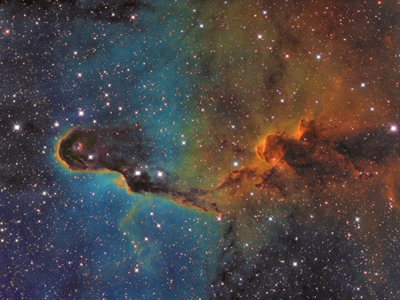 |
| Object |
“Elephant Trunk” nebula, part of
nebulosity complex IC1396 in Cepheus |
| Author |
Martin Myslivec |
| Camera |
G2-8300 |
| Filters |
H-alpha, OIII and SII |
| Exposure |
28 hours |
| Telescope |
300 mm
f/4.5 astrograph |
|
 |
| Object |
“Flame” and “Horse Head” nebulae in
Orion |
| Author |
Jan Camek |
| Camera |
G2-8300 |
| Filters |
Astrodon Ha, Baader LRGB |
| Exposure |
7.2 hours |
| Telescope |
300 mm
f/2.9 astrograph |
|
 |
| Object |
IC1805 nebula complex |
| Author |
Jan Camek |
| Camera |
G2-8300 |
| Filters |
Astrodon Ha+OIII (bi-color) |
| Exposure |
14 hours |
| Telescope |
300 mm
f/2.9 astrograph |
|
 |
| Object |
M33 “Triangulum galaxy” |
| Author |
Jan Camek |
| Camera |
G2-8300 |
| Filters |
Astrodon Ha+OIII, Baader LRGB, IDAS LPS2 |
| Exposure |
12 hours |
| Telescope |
300 mm
f/2.9 astrograph |
|
 |
| Object |
M78 nebula |
| Author |
Jan Camek |
| Camera |
G2-8300 |
| Filters |
Baader LRGB |
| Exposure |
6.2 hours |
| Telescope |
300 mm
f/2.9 astrograph |
|
 |
| Object |
NGC2244 “Rosette” nebula |
| Author |
Jan Camek |
| Camera |
G2-8300 |
| Filters |
Astrodon Ha 5nm, OIII 3nm (bi-color) |
| Exposure |
9 hours |
| Telescope |
300 mm
f/2.9 astrograph |
|
 |
| Object |
NGC5128 “Centaurus A” galaxy |
| Author |
Jan Camek |
| Camera |
G2-8300 |
| Filters |
Baader LRGB |
| Exposure |
6.6 hours |
| Telescope |
300 mm
f/2.9 astrograph |
|
 |
| Object |
NGC6914 nebula complex |
| Author |
Jan Camek |
| Camera |
G2-8300 |
| Filters |
Baader LRGB |
| Exposure |
6 hours |
| Telescope |
300 mm
f/2.9 astrograph |
|
 |
| Object |
WR134, nebulosity around a Wolf Rayet star in
Cygnus |
| Author |
Patrick Hochleitner and Dieter
Beer |
| Camera |
G2-8300 (LRGB + Hα +
OIII filters) |
| Telescope |
10 inch f/4
Newton |
|
 |
| Object |
NGC7000 “North America” a IC5070
“Pelican” |
| Author |
Ondrej Podlucky |
| Camera |
G2-8300 (+ narrow-band filters) |
| Exposure |
43 hours (mosaic of two
frames) |
| Telescope |
Borg 101ED + F4ED reducer |
|
 |
| Object |
M8 “Lagoon” |
| Author |
David Kennedy |
| Camera |
G2-8300 (+ Ha, R, G, B filters) |
| Exposure |
9.5 hours |
| Telescope |
Borg 60ED |
|
 |
| Object |
IC1396 “Elephant's trunk” |
| Author |
Ondrej Podlucky |
| Camera |
G2-8300 (+ narrow-band filters) |
| Exposure |
27 hours |
| Telescope |
Borg 101ED + F4ED reducer |
|
 |
| Object |
Lambda Centauri region |
| Author |
David Kennedy |
| Camera |
G2-8300 (+ Ha, R, G, B filters) |
| Exposure |
8.9 hours |
| Telescope |
71fl miniBorg F/7.8 |
|
 |
| Object |
NGC6888 Crescent nebula |
| Author |
Jonas Fiedler |
| Camera |
G2-8300 (+ Ha, R, G, B filters) |
| Exposure |
4.5 hours |
| Telescope |
Takahashi FSQ 106 |
|
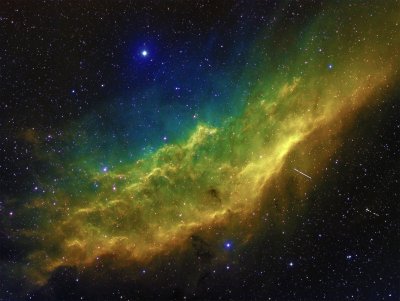 |
| Object |
NGC1499 California Nebula |
| Author |
Ondrej Podlucky |
| Camera |
G2-8300 (+ narrow-band filters) |
| Exposure |
28 hours |
| Telescope |
Borg 101ED + F4ED reducer |
|
 |
| Object |
NGC891 |
| Author |
Stefano Campani |
| Camera |
G2-8300 with H-alpha and RGB filters |
| Exposure |
6.4 hours |
| Telescope |
24" (610 mm) RNT
Newton |
|
 |
| Object |
NGC660 |
| Author |
Stefano Campani |
| Camera |
G2-8300 with H-alpha and RGB filters |
| Exposure |
10.6 hours |
| Telescope |
24" (610 mm) RNT
Newton |
|
 |
| Object |
IC348 |
| Author |
Miloš Hroch |
| Camera |
G2-8300 |
| Telescope |
200 mm, f/2.9
astrograph (f/4 mirror + 0.73×
ASA corrector) |
|
 |
| Object |
NGC281 “Pacman nebula” |
| Author |
Miloš Hroch |
| Camera |
G2-8300 |
| Telescope |
200 mm, f/2.9
astrograph (f/4 mirror + 0.73×
ASA corrector) |
|
 |
| Object |
VdB14, VdB15 |
| Author |
Miloš Hroch |
| Camera |
G2-8300 |
| Telescope |
200 mm, f/2.9
astrograph (f/4 mirror + 0.73×
ASA corrector) |
|
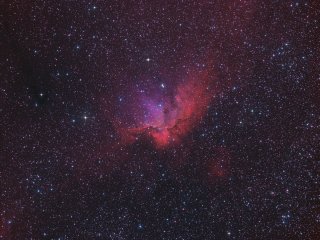 |
| Object |
NGC7380 “Wizard nebula” |
| Author |
Miloš Hroch |
| Camera |
G2-8300 |
| Telescope |
200 mm, f/2.9
astrograph (f/4 mirror + 0.73×
ASA corrector) |
|
 |
| Object |
IC5070 “Pelican Nebula” |
| Author |
Thomas Jäger |
| Camera |
G2-8300 |
| Telescope |
12" (305 mm) f/3.8
astrograph |
|
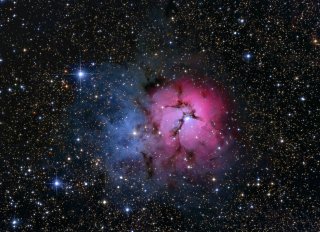 |
| Object |
M20 “Trifid” |
| Author |
David Kennedy |
| Camera |
G2-8300 |
| Telescope |
Vixen VC200L with reducer |
|
 |
| Object |
Comet C2009 P1 Garradd and M71 |
| Author |
Martin Myslivec |
| Camera |
G2-8300 |
| Telescope |
185mm f/3.9 astrograph |
|
 |
| Object |
IC1396 “Elephant Trunk” |
| Author |
Martin Myslivec |
| Camera |
G2-8300 (+narrow-band filters) |
| Telescope |
185mm f/3.9 astrograph |
|
 |
| Object |
NGC5128 “Centaurus A” |
| Author |
David Kennedy |
| Camera |
G2-8300 |
| Telescope |
Vixen VC200L with reducer |
|
 |
| Object |
NGC6888 “Crescent Nebula” |
| Author |
Patrick Hochleitner and Dieter Beer |
| Camera |
G2-8300 |
| Telescope |
Skywatcher BD 120ED + 0,85 flattener |
|
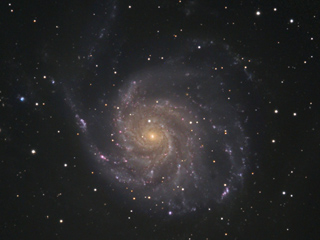 |
| Object |
M101 |
| Author |
Christoph Gerhard |
| Camera |
G2-8300 |
| Telescope |
7-inch Maksutov |
|
 |
| Object |
NGC6559 |
| Author |
Resa Ghanawistschi |
| Camera |
G2-8300 |
| Telescope |
Pentax 75SDHF |
|
 |
| Object |
NGC7000 “North America” |
| Author |
Martin Myslivec |
| Camera |
G2-8300 (+ narrow-band filters) |
| Telescope |
185mm f/3.9 astrograph |
|
 |
| Object |
M101 |
| Author |
Manferd Fischer |
| Camera |
G2-8300 |
| Telescope |
ASA N8 |
|
 |
| Object |
IC405, IC410 |
| Author |
Ondrej Podlucky |
| Camera |
G2-8300 (+ narrow-band filters) |
| Telescope |
Borg 101ED + F4ED reducer |
|
 |
| Object |
NGC2237 “Rosette” |
| Author |
Ondrej Podlucky |
| Camera |
G2-8300 (+ narrow-band filters) |
| Telescope |
Borg 101ED + F4ED reducer |
|
 |
| Object |
IC434 “Horse Head” |
| Author |
Ondrej Podlucky |
| Camera |
G2-8300 (+ H-alpha) |
| Telescope |
Borg 101ED + F4ED reducer |
|
 |
| Object |
NGC2237 “Rosette” |
| Author |
Tsutomu Chikazawa |
| Camera |
G2-8300 |
| Telescope |
Orion CT10 Newtonian |
|
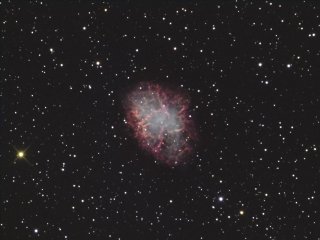 |
| Object |
M1 “Crab Nebula” |
| Author |
Tsutomu Chikazawa |
| Camera |
G2-8300 |
| Telescope |
Orion CT10 Newtonian |
|
 |
| Object |
M33 |
| Author |
Tsutomu Chikazawa |
| Camera |
G2-8300 |
| Telescope |
Orion CT10 Newtonian |
|
 |
| Object |
M51 “Whirlpool Galaxy” |
| Author |
Tsutomu Chikazawa |
| Camera |
G2-8300 |
| Telescope |
Orion CT10 Newtonian |
|
 |
| Object |
M81 “Boode Galaxy” |
| Author |
Tsutomu Chikazawa |
| Camera |
G2-8300 |
| Telescope |
Orion CT10 Newtonian |
|
 |
| Object |
NGC4725 |
| Author |
Martin Myslivec |
| Camera |
G2-8300 |
| Telescope |
185mm f/3.9 astrograph |
|
 |
| Object |
NGC891 |
| Author |
Pavel Cagas |
| Camera |
G2-8300 |
| Telescope |
250mm f/5.4 Newton |
|
 |
| Object |
M33 |
| Author |
Martin Myslivec |
| Camera |
G2-8300 |
| Telescope |
185mm f/3.9 astrograph |
|
 |
| Object |
NGC7000 “North America” |
| Author |
Martin Myslivec |
| Camera |
G2-8300 |
| Telescope |
185mm f/3.9 astrograph |
|
 |
| Object |
“Cave Nebula” |
| Author |
Martin Myslivec |
| Camera |
G2-8300 |
| Telescope |
185mm f/3.9 astrograph |
|
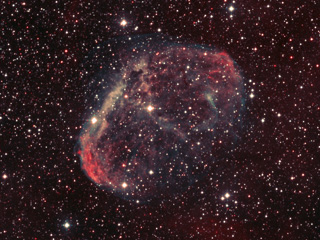 |
| Object |
NGC6888 “Crescent” (bi-color) |
| Author |
Martin Myslivec |
| Camera |
G2-8300 |
| Telescope |
185mm f/3.9 astrograph |
|
 |
| Object |
IC1396 “Elephant Trunk” |
| Author |
Martin Myslivec |
| Camera |
G2-8300 |
| Telescope |
185mm f/3.9 astrograph |
|
 |
| Object |
“Omega Centauri” cluster |
| Author |
Robert Knox |
| Camera |
G2-8300 |
| Telescope |
110mm Borg ED |
|
 |
| Object |
M8 “Lagoon Nebula” |
| Author |
Robert Knox |
| Camera |
G2-8300 (+ H-alpha) |
| Telescope |
110mm Borg ED |
|
 |
| Object |
Eta Cariane nebula |
| Author |
Robert Knox |
| Camera |
G2-8300 (+ H-alpha) |
| Telescope |
110mm Borg ED |
|
 |
| Object |
M106 |
| Author |
Martin Myslivec |
| Camera |
G2-8300 |
| Telescope |
185mm f/3.9 astrograph |
|
All images published with permission of their respective
authors.
| 